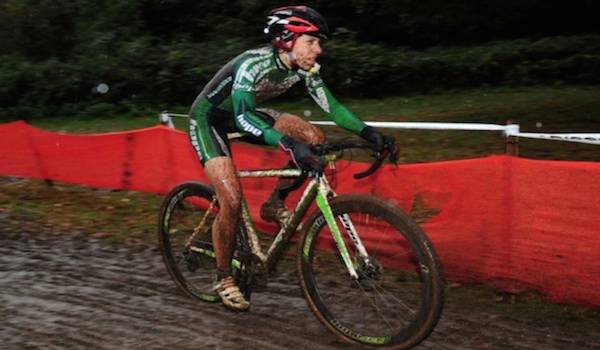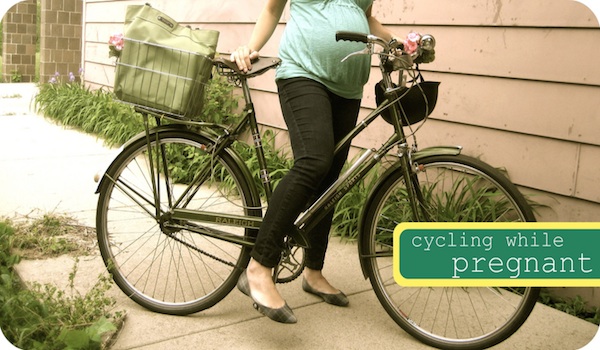With ‘cross season coming, or here depending upon where you live, there’s no better time to check it out and start racing. ‘Cross offers probably the best medium to get into racing as well as gives the most variety of riding. Races are also short enough that you don’t need hours and hours of training to do well. The two biggest barriers to ‘cross riding are having the skills to navigate the course and having a cyclocross bike. Of course you can use a mountain bike in a ‘cross race but it’s not ideal and won’t be nearly as fun.

The Bike Set-Up
A ‘cross bike is essentially a road bike with a wider fork and chain and seat stays to accommodate wider tires. With the wider tires, which are fatter and knobby, there are also wider brakes. Other than that, the bikes are essentially the same so taking the parts from your road bike and switching them to your cross bike is highly doable and way cheaper than buying a full ‘cross bike.
Parts to Buy
The first thing you need to get to switch from a road set-up to a ‘cross set-up is the frame and fork. An aluminum frame is generally the best bike to start with as it’s cheaper along with being more durable and can better withstand the crashes you are going to put it through. Size wise you generally want to go one size smaller than your road frame. Once you have a frameset you have the basis to build your ‘cross rig.
Brakes
The second thing you’re going to need since they’re vastly different on a road bike is the brakes. Now-a-days there are disc brakes but that only adds complications as you need dedicated wheels for them along with added cost. They are something to grow toward if you want them in the future. The brakes to get for ‘cross are cantilever brakes which open up and allow a larger tire to slide in and out. With the brakes, you are also going to need a mount for which the brake cable is going to attach to the frame. On the front fork, typically this is a spacer that goes on the steerer tube of the fork and has a mount on the front of it for which the brake housing is inserted in to. For the back brake, typically there is a mount that attaches to the seat post collar. Your local bike shop can advise you on which one you need for both.
Tires
The next thing you are going to have to buy are tires. There are an endless amount of options so you’ll have to read up on the different styles and brands as they are made for specific conditions. First, there are two types of tire: clinchers and tubulars. Tubulars are the best for ‘cross but they are expensive and not where you want to start. Clinchers are just fine and if your wheels can accommodate tube-less tires, that is your best option. They essentially get rid of the tube and seal with a tight fitting bead to the rim along with liquid sealant. Either way, getting an all-around tire that can be ridden in the mud to dry conditions is the best starting point so you’re not limited to what you can ride in. The best width to get is 32mm to 34mm as these are big enough to roll over most obstacles but not so big as to slow you down a lot.
Shoes and Pedals
The final thing you are going to need are shoes and pedals. Cyclocross uses mountain bike shoes and pedals because of the need to get off your bike and run along with the potential muddy conditions. Getting a second hand pair can be a great option and then you can upgrade down the line as your ‘cross riding progresses.
Parts to Switch
The first place to start is with the bottom bracket and crankset. Most bikes have different kinds of bottom brackets and some you can use with different cranks but not all. Your local bike shop can again guide you to what you need and your best options. Once you have the crankset you want you need to have chain rings that are suitable to ‘cross. If you bought a new crankset you can get a cross specific one with smaller chain rings already on it. Otherwise you will want to find the number of bolts the chain ring attaches with and the BCD, or the distance between the bolts. Depending upon your strength a 34/46 is a good starting point that will give you the gearing for faster courses and dirt road riding along with a small enough gear to get up the super steep climbs. The 34 also more easily lets you keep your same road cassette.
Seat Post
The next thing you need to switch, and potentially buy a new one, is the seat post. There are a number of different sizes but if your ‘cross frame is the same diameter seat post as your road bike you’re golden. Just switch the post and leave your road saddle on it.
All the Remaining Parts
After that everything else should be a straight forward switch. Change over the derailleurs and chain (replace the chain if it’s worn as you will be putting a lot of torque on it with ‘cross). You can leave the shifters on the bars and just take the stem together with the bars off the road bike and put it on the ‘cross bike. The wheels are a simple switch over and you can leave the cassette on it as well.
With the shifters you will want to install new cables and housing for two reasons. One is that where the housing goes will probably be different from your road bike so you will need to shorten or lengthen it. Second is that ‘cross is notoriously dirty and muddy. Your shifting is going to suffer at times so starting with new cables and housing will help ensure that cable drag is minimized.
Things to Upgrade
As you race more and more you will find that you will want to upgrade parts here and there. The first thing to upgrade is tires as you will quickly find that traction means everything in ‘cross. They can be upgraded by staying with clinchers, assuming that’s what you’re riding, or you can make the leap and upgrade your wheels as well to tubulars. These are more expensive as well as require more upkeep but they are the very best for ‘cross.
Another area you may want to upgrade for a fraction of the cost of tubulars is brakes. Stopping quickly is critical in ‘cross as the quicker you can slow down the longer you can stay at speed going into a corner. After that, the only thing you would really want to upgrade is the components or the frameset.
‘Cross can be expensive as you get further and further into the sport but starting out it doesn’t have to be. With a road bike you already have most of the equipment necessary to get a ‘cross bike rolling. The few additions that you do need, namely the frameset, don’t need to be expensive and you will find that you can get second hand equipment relatively cheap and with good quality. Once you start riding a ‘cross bike and/or racing it, you will find that your investment was well worth it for the amount of fun you are going to have with the bike.
 As people learn you are pregnant you will receive all kinds of advice, some good and lots bad. At the end of the day you have to do what is right for you, the golden rule: Listen To Your Body.
As people learn you are pregnant you will receive all kinds of advice, some good and lots bad. At the end of the day you have to do what is right for you, the golden rule: Listen To Your Body.